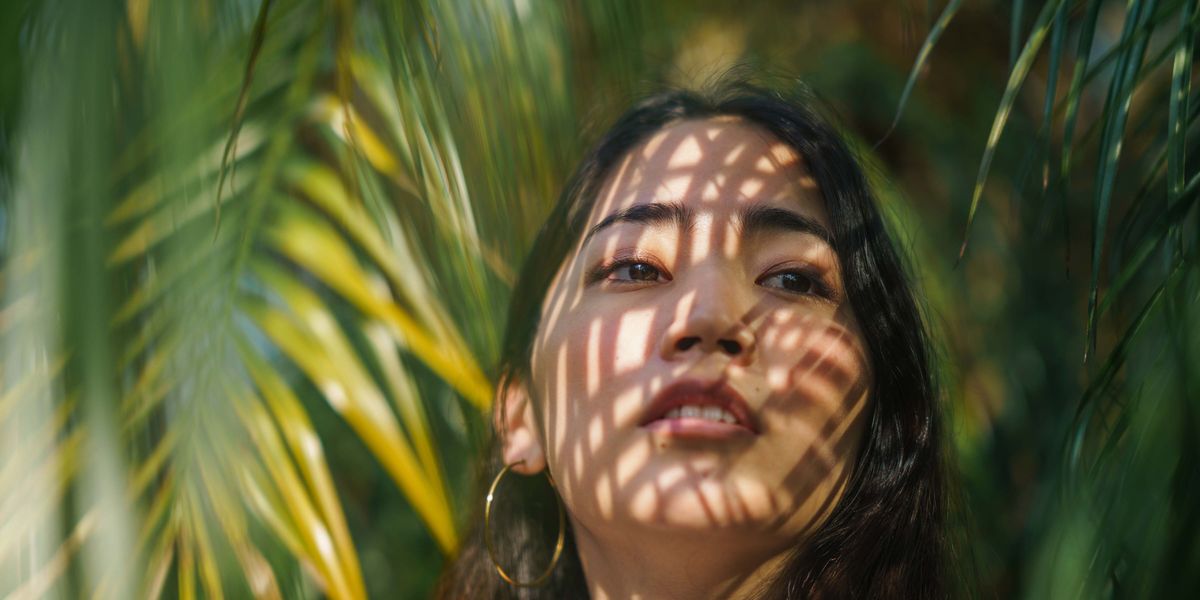I’m embarrassed to admit it, but I got sunburned while I was in Bali recently. It was cloudy, and even though I knew the UV index hovered at 7 that day, I didn’t think to put sunscreen on my arms. (Yes, I know better.)
Fortunately, I was with Kadek Supartika, a traditional Balinese healer, and we were in a jamu garden, a lush plot of healing herbs and flowering plants used for centuries by Indonesians to prevent and treat illness. Supartika whipped up a poultice of ground rice, clove, an aromatic ginger known as kencur, and a fermented alcohol called arrack. The remedy, known as boreh (which roughly translates to “body scrub”), looked gritty; I wasn’t sure I wanted it on my pink skin.
But as Supartika applied it to my forearms, the redness softened. I was astonished. This, many believe, is the power of jamu.
A Thing Of Beauty
So what exactly is jamu? “It can be traced back to two Javanese words—djampi, which roughly translates to ‘well wishes,’ and oesodo, or ‘health,’” says Metta Murdaya, author of Jamu Lifestyle and cofounder of skin-care company Juara. “At its most elemental, it refers to treatments and tonics prepared using ingredients commonly found in Indonesia.” Turmeric, nutmeg, tamarind, tiger grass—they all figure prominently in jamu rituals.
You’ll find these ingredients in the medicinal tonics many Indonesians drink daily and in the topical treatments found in the Balinese spas that dot the island and are used by healers like Supartika. “Healing is about body, mind, and soul, and boreh and jamu elixirs help from the inside out and out- side in,” says Santi Pratiwi Krishna, managing director of Dwaraloka Authentic, a company that sets up wellness experiences in Bali.
Science seems to support the benefits: Curcumin, the compound that gives turmeric its yellowish color, can help give skin a glow boost, aid in wound healing, and alleviate conditions such as psoriasis, research shows. “I like to keep an open mind,” says Indonesian-born, Michigan-based dermatologist Francisca Kartono, DO, who’s seen an uptick in interest in herbal remedies. “I’ve seen, for example, vitiligo patients rub turmeric on skin and experience results in terms of repigmentation.”
Drink It In Slowly
Jamu’s skin-focused benefits aren’t limited to topical application alone. The tonics themselves are believed to have many advantages. During my stay in Bali, I prepared an elixir known as djamoe beras kencur, a blend of rice, Indonesian ginger, tamarind, and palm sugar thought to be anti- bacterial and anti-inflammatory. In Indonesia, beverages like these are everywhere—cafés, homes, and on the backs of mostly female purveyors who walk the streets carrying bottles of their blends to sell on the streets.
Live the jamu life: Central to the Indonesian concept of jamu is mindfulness. Bring it to your everyday: “Take the time to relish the moment, whether that be during your skin-care routine or any self-care ritual,” says Santi Pratiwi Krishna, managing director of Balinese tour company Dwaraloka Authentic. “Anything that stimulates the senses—a pleasant fragrance, a soothing beverage—can clear stress and fatigue.”
And though I traveled thousands of miles to get a taste, jamu is beginning to find a place in the U.S. Puree Artisan Juice Bar has a jamu variety available in locations in D.C. suburbs, and in my home state of New York, the elixirs are popping up in open-air food markets and on delivery service websites. You’ll find Djamu—the creation of Indonesian-born Shanley Suganda—at Smorgasburg in Brooklyn and on her website, djamu.nyc, which delivers nationwide. It’s a modern take on a ritual that’s been a part of her life from the beginning: “Growing up, when I had a fever, my grandfather would go to the backyard, pick some herbs, blend them, and give it to me. The next day, I felt better,” says Suganda, a third-generation maker who noticed a market for the recipes when she made them for friends recovering from sickness.
Pause And Reset
Even more consequential than its ingredients, Murdaya says, is that jamu is rooted in a spirit of mindfulness and simplicity. Making jamu isn’t complicated, but it is intentional, a theme that could benefit today’s overzealous skin-care consumer who’s been programmed to believe that a 10-step routine is the best way to see results. The truth: “The more products you randomly pile on, the more prone you are to irritation,” says Dr. Kartono.
In fact, personal-care product use has contributed to an increase in both allergic and irritant contact derma- titis, according to a decade-long study in the Journal of the American Academy of Dermatology. This could explain why trends like “skinimalism” and “slow beauty” are lighting up social media—our exhausted complexions have had enough layering and exfoliating and retinol-ing. Dr. Kartono typically recommends only three or four products to her patients, and they’re basic things like a gentle cleanser, a simple moisturizer, and sunscreen. This appeals to me. And though I probably won’t drink jamu daily (coffee gives me life), a spirit of simplicity is something I plan on incorporating into my own skin-care routine.
That wisdom was worth the 24-hour flight.
Brian Underwood is the beauty director at Women’s Health. He is an award-winning journalist with more than 15 years of experience covering beauty and lifestyle for several national media outlets and previously served as beauty and wellness director at Oprah Daily. His work has appeared in Woman’s Day, Life & Style Weekly, Good Housekeeping, and many more. He also serves as a member of the Skin Cancer Foundation’s gala committee and lives in New York City with his daughter.
